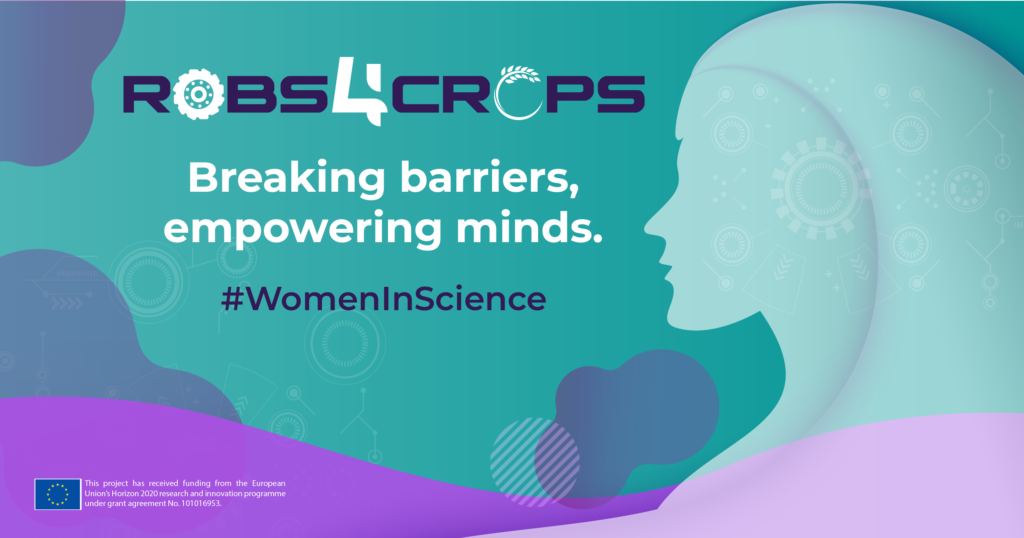February 11th marks the International Day of Women and Girls in Science, a momentous occasion where UNESCO and UN Women collaborate with esteemed organizations to celebrate globally.
This day is dedicated to advancing equal opportunities not only in traditional scientific realms but also across a wide array of scientific sectors and disciplines, such as robotics. It serves as a vital platform for promoting gender equality in scientific exploration and innovation. The event stands as a collective recognition and admiration for the remarkable individuals who are shattering gender barriers, making groundbreaking discoveries, and enriching diverse scientific fields with their contributions.
The Historical Significance of Women's Empowerment in STEM
Did you know that even with progress in education, a significant gender gap persists in STEM fields globally?
Gender equality is a central concern for the United Nations, with the empowerment of women and girls seen as crucial for global economic development and progress towards the goals of the 2030 Agenda for Sustainable Development.
The Commission on the Status of Women, in March 2011, adopted conclusions on women and girls’ access to education, training, and science and technology. Similarly, in December 2013, the General Assembly recognized the importance of women and girls’ equal access to and participation in science, technology, and innovation for achieving gender equality and empowerment.
In fields such as engineering and robotics, women have traditionally been inadequately represented. Despite women constituting over half of the population, they constitute just 34% of the workforce in STEM, with men significantly outnumbering women in most disciplines at the college level. Gender disparities are notably pronounced in rapidly expanding and highly remunerative fields of the future, such as computer science and engineering. When it comes to robotics roles, the number is even smaller, with women only making up about 16% of the workforce, according to the National Girls Collaborative Project.
In previous years, efforts to include girls and women in engineering and computing programs and workplaces have seen limited success. According to the AAUW report, women in business roles within technical companies, as well as those in technical positions, tend to leave at higher rates compared to their male counterparts (53 percent of women versus 31 percent of men after their first post-MBA job). This suggests that the overall workplace culture and environment in technical industries may not be conducive for women, regardless of their specific roles. Both institutional structures and practices, along with broader cultural factors, likely contribute to the underrepresentation of women in engineering and computing fields. Key challenges include:
- Social networks limited benefit for women: Social networks seem to offer fewer advantages for women compared to men. An examination of social networks among undergraduate management information systems (MIS) students during job searches revealed that although social networks improved job prospects for individuals, women’s networks did not provide the same job opportunities as men’s networks did.
- Work-life balance concerns: Work-life balance emerges as a significant issue for workers, particularly women. Some scholars argue that the true issue lies in a “culture of overwork.” Organizational cultures that promote overwork lead to dissatisfaction among both women and men. Due to societal expectations where women are tasked with home and family responsibilities while men are expected to be breadwinners, women may bear the brunt of negative consequences resulting from this culture of overwork more frequently than men do.
- Stereotypes and Biases: Stereotypes and biases are influential cultural factors that affect women’s representation in engineering and computing. Stereotypes can be descriptive (defining what women and men are like) or prescriptive (dictating what women and men should be like). Gender stereotypes typically assign higher social worth to men and assess men’s competence as superior to that of women.
Closing the disparity in STEM
Here are the foundational principles designed to bridge the gender gap in STEM, fostering true gender equality:
- Cultivate the skills and bolster the confidence of girls and women, equipping them for success in the realms of mathematics and science.
- Forge ahead with initiatives that enrich STEM education and provide unwavering support to girls, igniting their passion for these fields from the earliest stages of learning.
- Champion the attraction, recruitment, and sustained presence of women within STEM domains at colleges and universities, fostering an environment conducive to their growth and contribution.
- Revolutionize hiring practices, cultivate environments of inclusivity, and engineer pathways for advancement, ensuring that women in STEM fields are not only welcomed but empowered to thrive and lead.
Women in Robotics:
It’s impossible to discuss women’s contributions to robotics without mentioning Ada Lovelace. Her brilliance is so foundational that it’s hard to imagine discussing robotics without acknowledging her influence. Ada Lovelace, an English mathematician, penned the world’s inaugural computer program in 1843 while collaborating on an early mechanical computer devised by Charles Babbage. Lovelace’s annotations on Babbage’s contraption contain what’s widely regarded as the first algorithm intended for machine processing, effectively marking the inception of coding. Her pioneering work was pivotal in shaping our contemporary comprehension of computing and algorithms, which form the core of robotics. Without Ada Lovelace, the field of robotics, as we understand it today, would be inconceivable.
There is an interesting point to mention that since 2012, the Women in Robotics organization has been spotlighting women who are driving the future of robotics. This comprehensive list features over 350 women from diverse backgrounds, showcasing their roles across various ages, career stages, and occupations. This initiative underscores the enduring presence of women in the robotics industry, spanning from its earliest research labs to contemporary companies, illuminating their often-overlooked contributions. Here you can discover 50 heroines in robotics who are reshaping the future of the field.
Conclusion
How Robs4Crops contribute
Farmers are facing significant challenges like labor shortages, rising costs of essential resources, and the impacts of climate change, making it difficult for them to adapt and succeed. They need to be resilient and resourceful to overcome these obstacles. ROBS4CROPS, a project funded by the EU, aims to help farmers thrive by providing a labor-saving, fully autonomous robotic system for spraying and mechanical weeding. With smart implements, autonomous vehicles, and advanced software, this innovative system will help farmers reduce labor requirements and costs, supporting wide-scale adoption.
Moreover, by highlighting the achievements of women in agricultural robotics and providing them with the resources they need to succeed, Rob4Crops inspires future generations of female scientists and engineers. By fostering a supportive and inclusive environment, this project not only advances scientific knowledge but also promotes gender equality and social progress.


